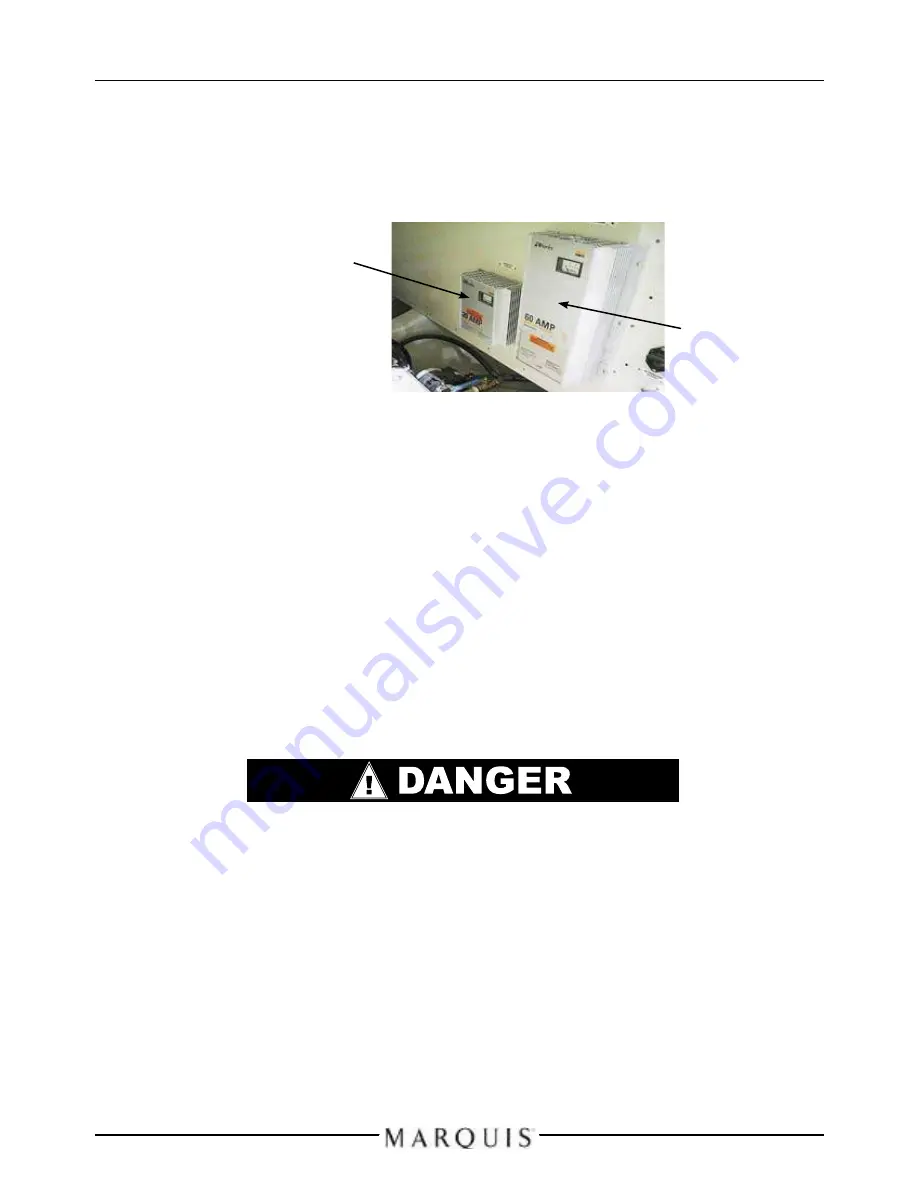
3837 • U3 10/07
3
DC E
lECtriCal
S
yStEm
S
ECtion
2
Charging the Batteries
(continued)
Battery Chargers
Your boat is equipped with two battery chargers. The voltage levels of the
engine and house batteries are monitored and maintained by a 60 amp
battery charger and the generator battery by a 20 amp battery charger.
These are mounted forward of the starboard engine.
To operate the battery charger:
1. Supply AC power to your boat, from either a shore power source
or the onboard generator. Refer to Section 3 - Shore Power and/or
Generator Power to do this.
2. On the AC Panel - Salon, switch the AC Main Circuit to proper power
source and Battery Charger circuit breaker to ON. Refer to Section
3 - AC Main Distribution Panel for more information on these circuit
breakers.
While the engines are running, their alternators generally supply
enough power to replace the power used by the boat’s DC equipment.
Without an engine running, however, the DC equipment will eventually
drain the batteries they are using. If this occurs, either start the
engines or use the appropriate onboard battery charger to recharge
the batteries.
Battery Maintenance
The batteries contain electrolyte which is an acid. Wear gloves and protective
eyewear when working on and around the batteries.
When servicing the batteries avoid damaging batteries which could spill
electrolyte into the engine room or bilge. Also, avoid getting any saltwater in
or on the battery. Either of these conditions can create a poisonous gas that is
harmful if inhaled.
While the batteries are relatively maintenance-free, there are a few things you can
do to increase their effectiveness and life.
• Keep the batteries fully charged. Batteries that are kept fully or near
fully charged last longer than batteries stored with a partial charge. The
charge level of the batteries can be monitored using the voltmeters on
the helm instrument panel (engine batteries) or the Main DC Distribution
panel (accessory batteries).
20 AMP
60 AMP
https://www.boat-manuals.com/















































